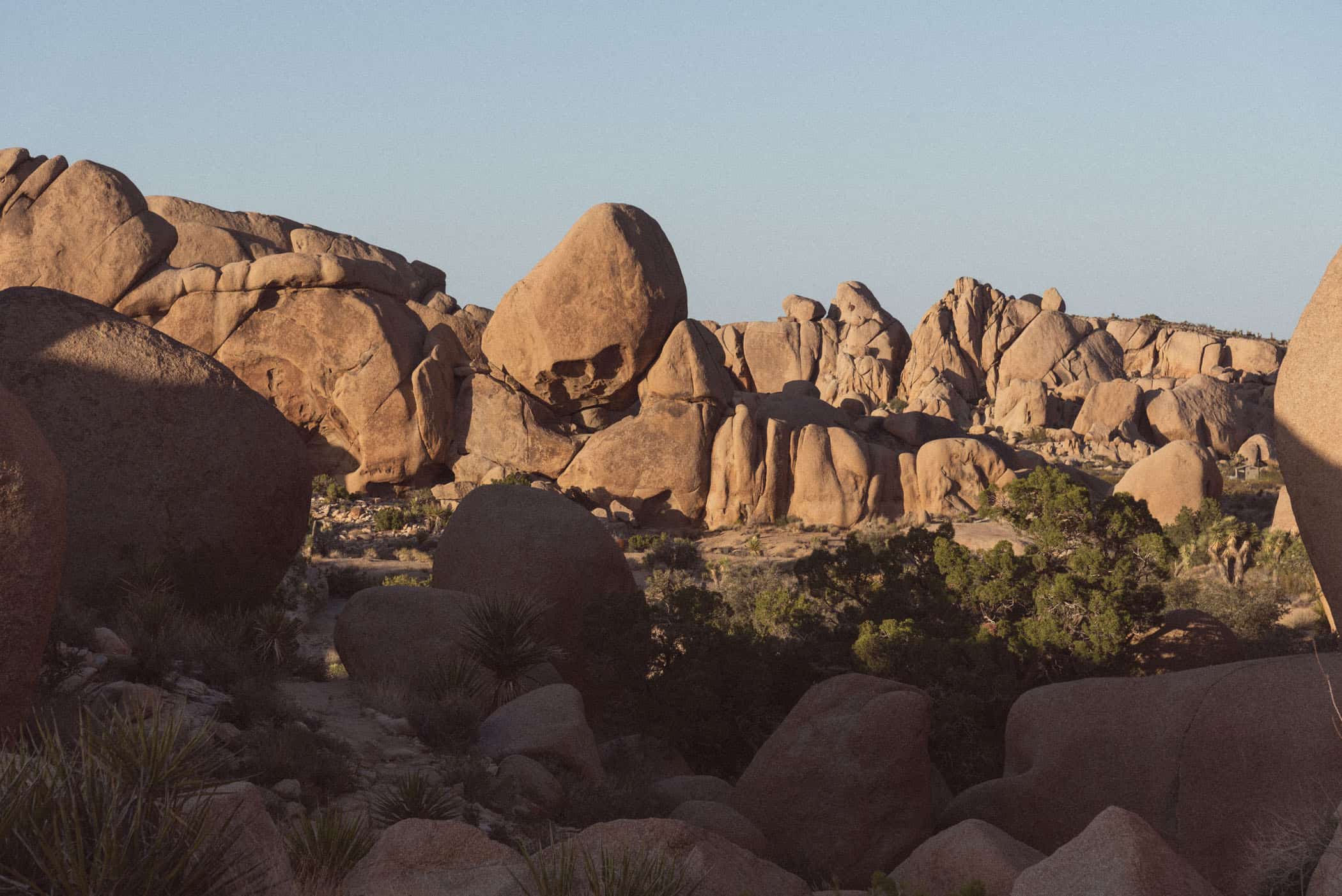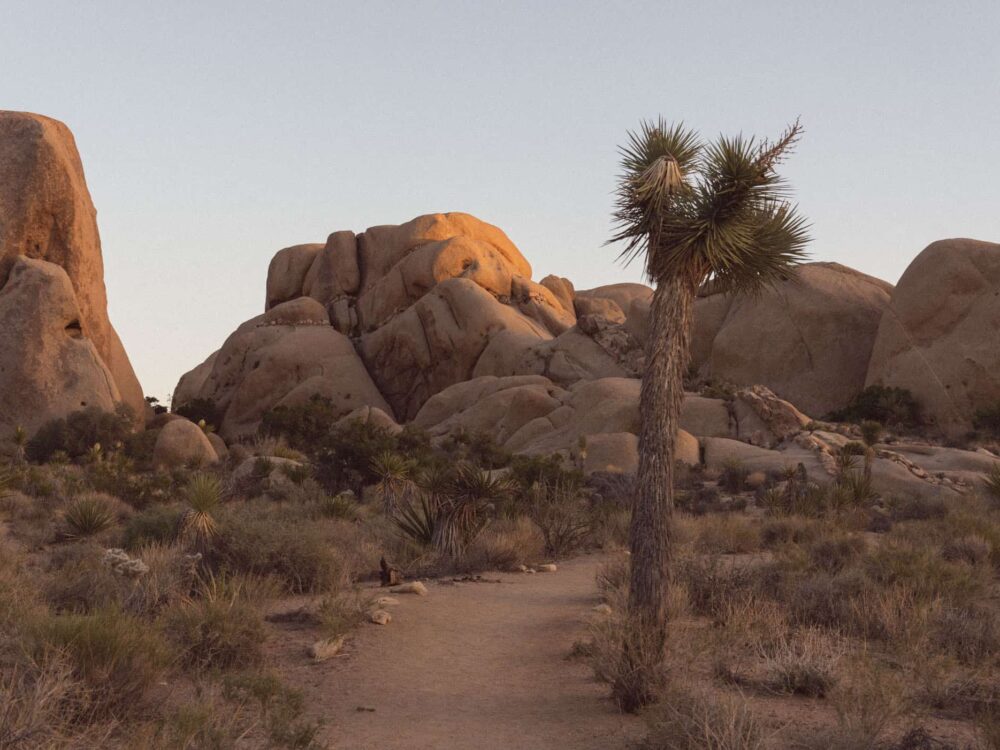Hike | Joshua Tree National Park | United States
Split Rock Loop Trail & Face Rock Spur (Joshua Tree)
Text | Anninka Kraus
Photography | Tobias Kraus

US California
This 7.4-kilometre loop trail (4.6 miles) starting from Jumbo Rocks campground takes in some of the scariest, funniest, and most bizarre rock faces we’ve discovered in Joshua Tree National Park. Our plan was to stroll over to Skull Rock and after some fun rock scrambling return to the campground. But when we spotted some people finishing a trail just across the road from Skull Rock, we just had to explore a little more. We knew we had plenty of daylight left and decided to watch the fiery desert sunset from the trail.
Once again, this turned out to be the best time for hiking in the desert. The scenery of large boulders and lush desert flora is very pretty in itself, but flooded with the reddish-golden glow of the changing light, it was absolutely stunning. As shadows grew longer and we started looking for interesting shapes more closely, we saw a contorted grimace in almost every rock and boulder; fearsome faces with deep hollowed-out eye sockets, a pointed nose, and egg-shaped skull.
As the trail follows the rise and fall of the desert floor, it takes in magnificent desert vistas and passes by so many interesting rock formations that Split Rock didn’t really stand out. Skull Rock and Face Rock have the most interesting shapes I think. You’ll also pass by some impressive cave shelters, which probably offer some well-needed shade if you hike this trail in the midday heat.
The trail makes a figure of eight, setting off from Jumbo Rocks towards Skull Rock, then continues across the road to Face Rock, from where the track meanders north, then takes a right and returns via Split Rock.
When you’re back at Park Boulevard, you can either return to Jumbo Rocks the way you came, or complete the figure-of-eight loop by following the Skull-Rock Nature Trail to the campground entrance and make your way back to your site, or the start of the trail, from there.








Joshua Tree National Park | California
Hike | Loop trail | 2 hours
track details.
Start/End: Jumbo Rocks campground, Joshua Tree National Park
Distance: 7.4km km return (4.6 miles)
Time: 2 hours return
Elevation: 150m meters (+/-) (lowest point: 1285m / highest point: 1355m)
Best time to hike: early morning or late afternoon
Further information: Official National Park Service website